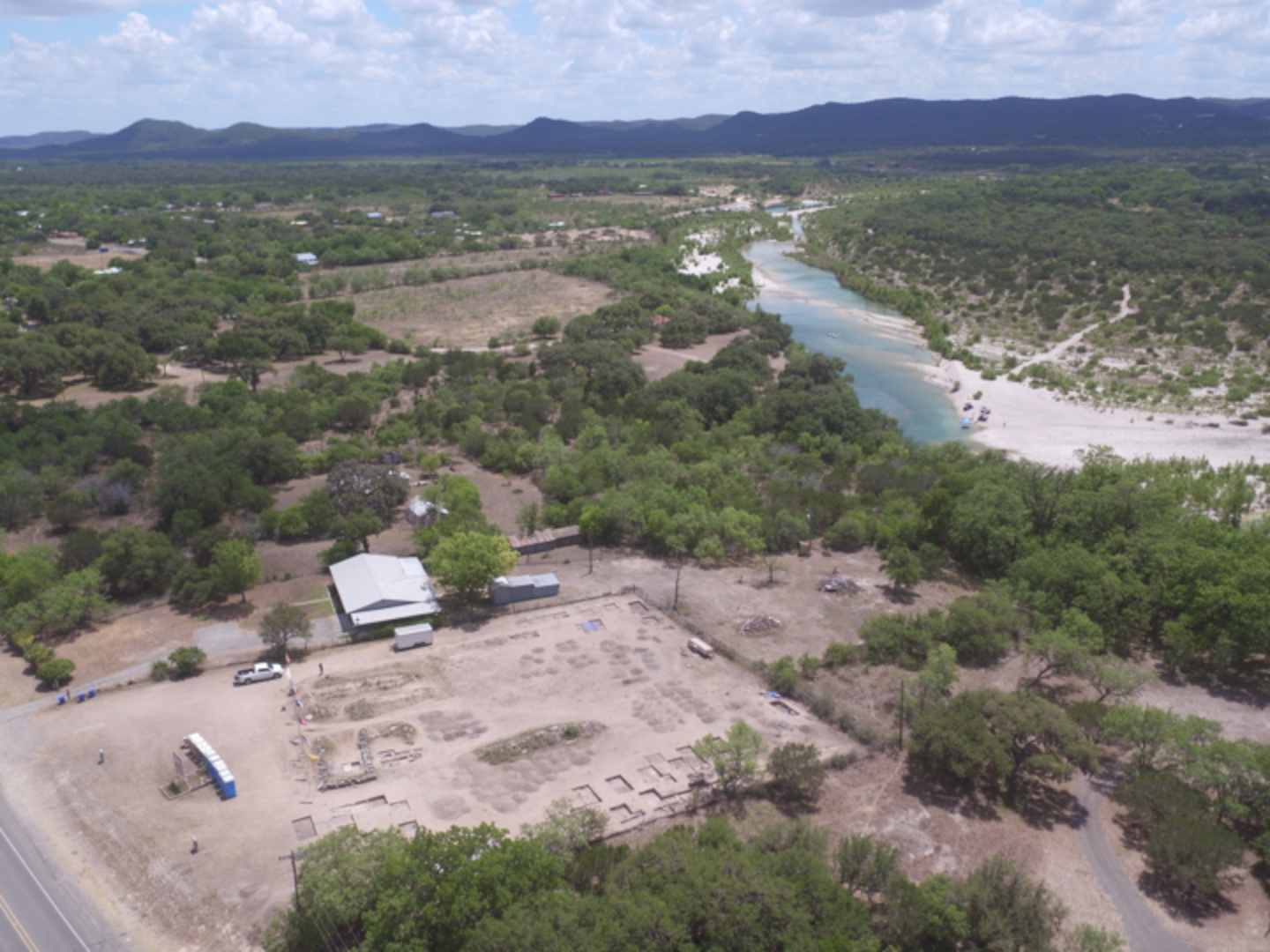
From the preserve looking east toward the adjacent Mission San Lorenzo site, middens are visible along the fence lines, and a potential foundation stone can be seen behind the shed. Photo credit: April M. Brown / TAC
The Archaeological Conservancy recently acquired property in Camp Wood, Texas, that contains archaeological deposits related to Mission San Lorenzo de la Cruz, a small 18th century Spanish mission site located along the Nueces River. Camp Wood is a scenic historical community situated in Texas’ Hill Country, about 75 miles west of San Antonio. The main portion of Mission San Lorenzo de la Cruz is owned by the City of Camp Wood and managed by the Nueces Canyon Mission Restoration Organization (NCMRO). The new Conservancy preserve borders the mission property to the south and west and contains important middens, features, and possibly Apache camps that have not been previously recorded or researched. The property also includes a portion of the natural spring that has attracted people to the mission for thousands of years.
The mission was established for the Lipan Apache in 1762 by Franciscan friars who hoped to quell violent Apache raids across the frontier. Daily operations were overseen by Capt. Felipe Rábago—a wily and controversial character in early Texas history. Constructed in phases, the complex grew into an impressive wilderness outpost of 14 adobe and limestone structures that included a church, sacristy, granary, bastion, and residences, along with camps, agricultural fields, and irrigation features that extended beyond the walls of the complex. Historical accounts indicate that the mission eventually became a place of refuge for both the Apache and the Spanish, who faced a common enemy in the Comanche. After only nine years, the mission was decommissioned and abandoned. The ruins deteriorated rapidly, though the site continued to be occupied by Indigenous groups, soldiers, and settlers. The site also served as the U.S. military installation of Camp Wood, the community’s namesake, from 1857 to 1861.

Spanish gunflint was found during recent shovel testing by Texas Tech University. Photo credit: Dr. Tamra Walter / Texas Tech University
The new preserve was recommended as a potential acquisition for the Conservancy by Tamra Walter, associate professor of archaeology at Texas Tech University, who conducted excavations at the mission complex in 2019. Walter noted important archaeological deposits beyond the property boundaries, but was unable to gain access to investigate further. In early 2023, Walter discovered the property was going up for sale, and feared that it would fall prey to “pay-to-dig” programs that frequent this area of Texas. In close collaboration with Walter, NCMRO, and the landowners, the Conservancy was able to purchase and protect the site. A management plan will be developed, and recent shovel testing has prepared the site to be subdivided in order to sell a home that is located on the property. All 16 shovel tests produced artifacts related to the mission in addition to archaic deposits. The vacant land containing these important deposits will become an extension of the Mission San Lorenzo historical site in cooperation with NCMRO. Future work at the site will include trail and fence construction, clean-up, revegetation, and the installation of educational kiosks. With the help of NCMRO, the site will eventually be open for public day use, with recreational and educational opportunities for visitors. Future research at this site may reveal a better understanding of daily life at the mission and the relationships between the Spanish and the Lipan Apache during a tumultuous time in early Texas history.




